포지티브 레이크 인서트와 네거티브 레이크 인서트: 어떤 것이 작업장에서 더 유리할까요?
선반 앞에 서서 어떤 인서트를 사용할지 고민한 적이 있나요? 여러분은 혼자가 아닙니다. 혼란을 없애고 포지티브와 네거티브 레이크 인서트의 핵심을 짚어보겠습니다. 이 과정을 마치면 뜨거운 칼로 버터를 자르듯 금속을 자르게 될 것입니다.
레이크 각도가 중요한 이유는 무엇인가요?
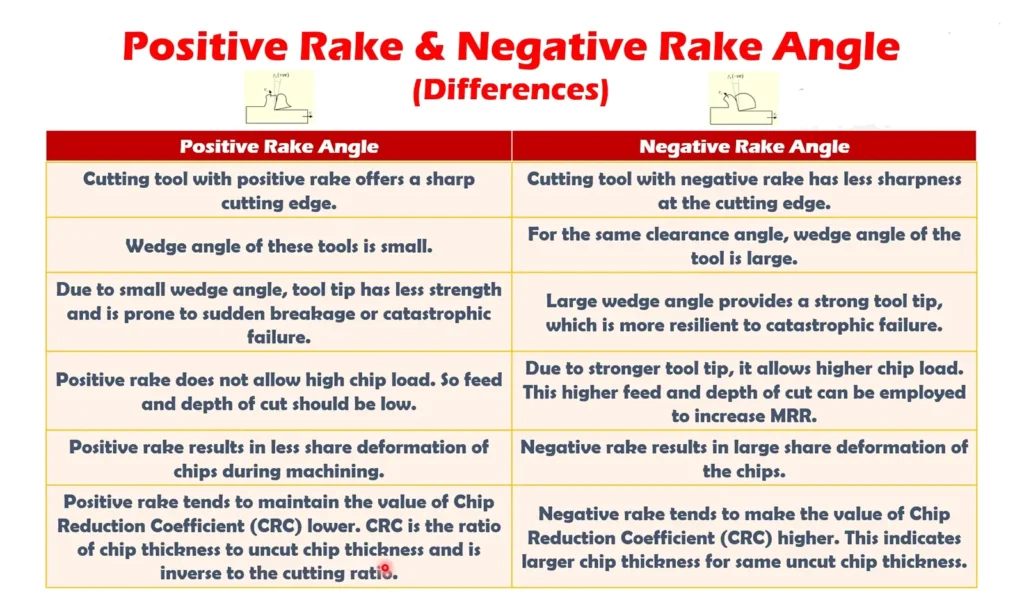
먼저 여기서 다루고 있는 내용을 자세히 살펴보겠습니다:
- 레이크 각도: 절삭 공구가 공작물에 닿는 방식이 중요합니다. 채소를 자른다고 상상해 보세요. 칼이 도마에 부딪힐 때 칼의 각도가 어떻게 될까요? 이것이 레이크 각도입니다.
- 포지티브 레이크: 버터를 자르는 날카로운 칼이라고 생각하세요. 칼날이 자르는 방향과 반대 방향으로 기울어져 있어 재료를 쉽게 자를 수 있습니다.
- 네거티브 레이크: 흙을 밀어내는 불도저와 비슷합니다. 절단면이 절단 방향을 향해 기울어져 있어 더 강하지만 더 많은 힘이 필요합니다.
그렇다면 왜 신경 써야 할까요? 올바른 레이크는 말 그대로 프로젝트의 성패를 좌우할 수 있기 때문입니다. 공작물의 마감부터 공구의 수명에 이르기까지 모든 것에 영향을 미치기 때문입니다. 레이크를 제대로 사용하면 작업장의 마법사가 됩니다. 잘못 사용하면 강철 빔에 버터 나이프를 사용하는 것과 마찬가지입니다.
인기 모델: 구체화하기
실제 사례에 대해 이야기해 보겠습니다. 다음은 워크샵 모험에서 접할 수 있는 네거티브 및 포지티브 터닝 인서트의 인기 있는 모델입니다:
네거티브 터닝 인서트

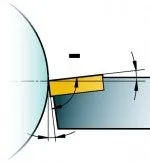
- 양면 및/또는 단면
- 높은 엣지 강도
- 제로 클리어런스
- 외부 선삭을 위한 첫 번째 선택
- 무거운 절단 조건
- 샌드빅 코로만트 CNMG 120408-PM 4325
- 범용 터닝에 적합한 다용도 네거티브 인서트
- 스틸 및 스테인리스 스틸과 잘 어울립니다.
- PM 칩브레이커는 중간에서 거친 선삭에서 칩 제어에 도움이 됩니다.
- 케나메탈 DNMG 150608 KC5010
- 무거운 황삭 작업에서 견고함으로 유명합니다.
- 기계 가공이 어려운 재료 작업에 이상적
- KC5010 등급은 우수한 내마모성을 제공합니다.
- Iscar WNMG 080408-TF IC8150
- 강철의 황삭과 마감 모두에 널리 사용되는 선택입니다.
- TF 칩 브레이커는 다양한 이송 속도에서 우수한 칩 제어 기능을 제공합니다.
- IC8150 등급은 내마모성과 인성의 균형을 유지합니다.
- 미쓰비시 TNMG 160408-MA VP15TF
- 다양한 소재에서 우수한 성능을 발휘하는 다용도 인서트
- 강철의 중간 절단용으로 설계된 MA 칩브레이커
- 내마모성과 인성의 균형이 잘 잡힌 VP15TF 코팅
포지티브 터닝 인서트
네거티브 인서트는 각도가 90°(이격각 0°)이고 포지티브 인서트는 각도가 90° 미만(예: 7° 이격각)입니다. 네거티브 스타일 인서트의 그림은 인서트가 홀더에서 어떻게 조립되고 기울어지는지 보여줍니다. 두 인서트 유형의 몇 가지 특징은 다음과 같습니다:

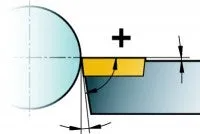
- 단면
- 낮은 절삭력
- 측면 여유 공간
- 슬림한 부품의 내부 선삭 및 외부 선삭을 위한 첫 번째 선택
- 샌드빅 코로만트 VBMT 160404-MM 2025
- 마무리 작업에 이상적인 포지티브 인서트
- 스테인리스 스틸 및 내열 합금과 잘 어울립니다.
- MM 칩브레이커는 부드러운 절단 작업을 위해 설계되었습니다.
- 케나메탈 CCMT 09T308LF KC5410
- 스틸 및 스테인리스 스틸의 마감 및 경-중급 절단에 적합합니다.
- LF 칩브레이커는 우수한 표면 마감을 제공합니다.
- 고속 애플리케이션에서 내마모성을 제공하는 KC5410 등급
- Iscar DCMT 11T304-SM IC907
- 다양한 소재의 마감에 적합한 포지티브 지오메트리 인서트
- 부드러운 절단과 우수한 표면 마감을 위해 설계된 SM 칩브레이커
- 스테인리스강 및 내열 합금 가공에 적합한 IC907 등급
- 미쓰비시 VCMT 160404-FV VP15TF
- 마무리 작업을 위한 다용도 포지티브 인서트
- 가벼운 절단과 우수한 표면 마감을 위해 설계된 FV 칩브레이커
- 내마모성과 인성의 균형을 제공하는 VP15TF 코팅
이는 방대한 터닝 인서트의 세계에서 몇 가지 예에 불과하다는 점을 기억하세요. 각 제조업체는 일반적으로 다양한 용도에 맞게 다양한 형상, 코팅 및 등급을 갖춘 광범위한 옵션을 제공합니다.
삽입물을 선택할 때는 다음 사항을 고려하세요:
- 작업 중인 자료
- 작업 유형(황삭, 정삭 등)
- 사용할 커팅 매개변수
- 표면 마감 또는 칩 제어에 대한 특정 요구 사항
항상 제조업체의 권장 사항을 참조하고 기술 지원팀에 문의하는 것이 좋습니다. 그들은 종종 작업에 가장 적합한 인서트를 선택하는 데 도움이 될 수 있는 애플리케이션에 대한 통찰력을 제공할 수 있습니다.
완벽한 인서트를 찾는 가장 좋은 방법은 때로는 시행착오를 거치는 것임을 잊지 마세요. 그러니 워크숍에서 약간의 실험을 두려워하지 마세요. 누가 알겠어요? 예상보다 훨씬 더 효과적인 조합을 발견할 수도 있습니다!
포지티브 레이크 인서트: 매끄러운 연산자
파티에 갔는데 군중 사이를 미끄러지듯 지나가며 모두를 편안하게 만드는 한 사람이 있다고 상상해 보세요. 바로 포지티브 레이크 인서트입니다. 이들은 인서트 세계의 매력적이고 효율적인 일꾼입니다.
좋은 내용:
- 부드러운 소재를 통한 꿈같은 커팅: 포지티브 레이크 인서트는 주방의 날카로운 요리사 칼과 같습니다. 부드러운 금속을 쉽게 자르고 깨끗하고 매끄러운 절단면을 남깁니다.
- 필요한 절삭력 감소: 기계가 고마워할 것입니다. 모서리가 재료를 ‘슬라이스'하도록 기울어져 있기 때문에 절단하는 데 더 적은 힘이 필요합니다. 즉, 기계에 가해지는 부담이 적고 공구 수명이 더 길어질 수 있습니다.
- 공작물의 매끄러운 마감 처리: 거울 같은 마감을 원한다면 포지티브 레이크 인서트가 가장 적합합니다. 특히 부드러운 소재에서 더 매끄러운 표면을 만드는 경향이 있습니다.
- 정밀 작업에 적합: 엄격한 공차를 맞춰야 할 때는 포지티브 레이크 인서트가 도움이 됩니다. 특히 가벼운 커팅에서 더 나은 제어와 정확성을 제공합니다.
- 에너지 효율: 절삭력이 덜 필요하기 때문에 포지티브 레이크 인서트는 에너지 효율이 더 높을 수 있습니다. 모든 킬로와트가 중요한 세상에서 이는 시간이 지남에 따라 상당한 절감 효과를 가져올 수 있습니다.
좋지 않은 것들:
- 약간 취약할 수 있음: 파티는 잘하지만 거친 럭비 게임에는 약한 친구처럼, 포지티브 레이크 인서트는 약간 섬세할 수 있습니다. 특히 무거운 하중을 받으면 쉽게 부서지거나 부러질 수 있습니다.
- 견고하고 딱딱한 소재는 적합하지 않습니다.: 경화된 강철에 포지티브 레이크 인서트를 사용해보면 버터 나이프를 사용하는 것보다 낫습니다. 정말 거친 재료에는 적합하지 않습니다.
- 일부 설정에서 진동이 발생할 수 있습니다.: 특정 가공 설정에서, 특히 오버행이 긴 경우 포지티브 레이크 인서트는 때때로 더 많은 진동을 유발할 수 있습니다. 이는 표면 마감과 잠재적으로 정확도에 영향을 미칠 수 있습니다.
- 중단된 컷에는 적합하지 않을 수 있습니다.: 틈이나 구멍(중단된 절단)이 있는 조각을 작업하는 경우 포지티브 레이크 인서트가 최선의 선택이 아닐 수 있습니다. 이러한 중단 부분에 부딪히면 조각이 나거나 부러질 수 있습니다.
네거티브 레이크 인서트: 거친 녀석들
이제 탱크처럼 튼튼하게 만들어진 친구를 상상해 보세요. 부드럽지는 않지만 어떤 일이든 처리할 수 있는 친구를 상상해 보세요. 네거티브 레이크 인서트를 소개합니다. 이들은 기계 가공 세계의 일꾼입니다.
좋은 내용:
- 못처럼 견고하고 충격에 강합니다.: 네거티브 레이크 인서트는 소란스러운 술집의 바운서와 같습니다. 땀을 흘리지 않고도 거친 작업을 처리할 수 있습니다. 경화된 강철이나 무거운 황삭 작업이 있으신가요? 이 사람들이 바로 여러분을 도와줄 것입니다.
- 양 갈퀴를 울리는 딱딱한 소재에 적합: 포지티브 레이크 인서트는 부서지거나 부러질 수 있지만, 네거티브 레이크 인서트는 트럭 운송을 계속합니다. 스테인리스 스틸, 티타늄 또는 경화강과 같은 소재에 이상적입니다.
- 무거운 황삭 작업에 이상적: 많은 양의 재료를 빠르게 꺼내야 할 때는 네거티브 레이크 인서트가 적합합니다. 더 높은 이송 속도와 절삭 깊이를 불평 없이 처리할 수 있습니다.
- 더 안정적이고, 더 적은 잡음: 네거티브 레이크 인서트의 기하학적 구조는 절단 중에 더 안정적입니다. 이는 진동과 잡음이 적다는 것을 의미하며, 덜 견고한 설정이나 긴 오버행으로 작업할 때 판도를 바꿀 수 있습니다.
- 열악한 환경에서도 공구 수명 연장: 네거티브 레이크 인서트는 작업이 힘들어질 때에도 계속 사용할 수 있습니다. 견고한 특성으로 인해 단단한 재료나 까다로운 조건에서 작업할 때 포지티브 레이크보다 오래 지속되는 경우가 많습니다.
좋지 않은 것들:
- 더 많은 절삭력 필요: 기계가 약간 불평할 수 있습니다. 절삭날이 절단면에 기울어져 있기 때문에 재료를 제거하는 데 더 많은 힘이 필요합니다. 이는 더 많은 전력 소비와 잠재적으로 더 많은 기계 마모를 의미합니다.
- 마무리가 항상 매끄럽지 않은 경우: 거울 같은 마감을 원한다면 네거티브 레이크 인서트는 실망스러울 수 있습니다. 특히 부드러운 소재의 경우 표면이 더 거칠어지는 경향이 있습니다.
- 더 많은 열 발생 가능: 추가 절삭력이 공짜로 제공되는 것은 아닙니다. 네거티브 레이크 인서트는 절삭 중에 더 많은 열을 발생시키는 경우가 많으므로 제대로 관리하지 않으면 공작물과 공구 수명에 영향을 미칠 수 있습니다.
- 벽이 얇거나 섬세한 부품에는 적합하지 않음: 높은 절삭력은 때때로 벽이 얇거나 섬세한 부품을 변형시킬 수 있습니다. 쉽게 구부러지거나 휘어질 수 있는 작업을 하는 경우 네거티브 레이크 인서트가 최선의 선택이 아닐 수 있습니다.
위대한 논쟁: 포지티브와 네거티브 레이크 각도
그렇다면 어느 쪽이 더 나을까요? 글쎄요, 그렇게 간단하지 않습니다. 망치와 드라이버 중 어느 것이 더 나은지 묻는 것과 마찬가지로, 어떤 작업을 하느냐에 따라 달라집니다. 세분화해 보겠습니다:
긍정적인 태도를 취해야 할 때:
- 더 부드러운 소재: 알루미늄, 황동 또는 연강과 같은 재료로 작업할 때는 포지티브 레이크 인서트를 사용하는 것이 좋습니다. 더 매끄러운 마감을 얻을 수 있고 절삭력이 덜 필요합니다.
- 매우 매끄러운 마무리가 필요할 때: 표면 마감이 최우선이라면 포지티브 레이크 인서트가 가장 좋습니다. 특히 부드러운 소재에 더 매끄러운 표면을 남기는 경향이 있습니다.
- 미크론 단위가 중요한 정밀 작업용: 절삭력이 낮고 포지티브 레이크 인서트의 제어력이 뛰어나 정밀 작업에 이상적입니다. 엄격한 공차를 맞춰야 할 때 가장 적합한 공구입니다.
- 성능이 떨어지는 기계로 작업하는 경우: 절삭력이 덜 필요하기 때문에 기계에 여유 마력이 많지 않은 경우 포지티브 레이크 인서트가 좋은 선택이 될 수 있습니다.
- 마무리 패스의 경우: 네거티브 레이크로 러핑을 했더라도 마무리 패스에서 포지티브 레이크로 전환하면 표면 마감이 더 좋아질 수 있습니다.
네거티브로 전환해야 할 때:
- 더 단단한 재료: 스테인리스 스틸, 경화강 또는 기타 거친 소재를 다룰 때는 네거티브 레이크 인서트가 더 나은 선택인 경우가 많습니다. 이러한 소재가 가하는 악용을 견딜 수 있기 때문입니다.
- 거친 절단 작업: 많은 양의 자재를 빠르게 제거해야 하나요? 네거티브 레이크 인서트가 적합합니다. 땀을 흘리지 않고도 더 높은 이송 속도와 절단 깊이를 처리할 수 있습니다.
- 안정성이 중요한 경우: 덜 견고한 설정으로 작업하거나 많은 잡담을 처리하는 경우 네거티브 레이크 인서트의 안정성이 생명의 은인이 될 수 있습니다.
- 중단된 컷의 경우: 틈이나 구멍이 있는 조각을 작업할 때 네거티브 레이크 인서트의 견고함으로 인해 조각이나 부러짐이 적습니다.
- 열악한 환경에서 더 긴 공구 수명이 필요한 경우: 공구 마모가 주요 관심사인 까다로운 환경에서 작업하는 경우, 네거티브 레이크 인서트의 견고함으로 공구 수명을 연장할 수 있습니다.
리얼 토크: 올바른 인서트 선택하기
모든 상황에 맞는 정답은 없습니다. 하지만 올바른 결정을 내리는 데 도움이 되는 몇 가지 팁이 있습니다:
- 자료 파악하기: 부드럽고 관대한가요, 아니면 딱딱하고 완고한가요? 부드러운 소재는 일반적으로 포지티브 레이크가 더 잘 어울리는 반면, 딱딱한 소재는 네거티브 레이크가 더 잘 어울립니다.
- 머신을 고려하세요: 파워 플레이어인가요, 아니면 정교한 플레이어인가요? 덜 강력한 기계로 작업하는 경우, 절삭력을 줄이기 위해 포지티브 레이크 쪽으로 기울여야 할 수도 있습니다.
- 최종 목표에 대해 생각해 보세요.: 러프하게 마무리할 건가요, 아니면 미러 마감을 할 건가요? 필요한 표면 마감은 포지티브 레이크와 네거티브 레이크 중 하나를 선택하는 데 큰 영향을 미칠 수 있습니다.
- 칩 제어를 잊지 마세요: 레이크마다 칩을 처리하는 방식이 다릅니다. 포지티브 레이크는 긴 칩을 생성하는 경향이 있는 반면, 네거티브 레이크는 짧고 관리하기 쉬운 칩을 생성하는 경우가 많습니다.
- 설정 강성 평가: 덜 견고한 설정이나 긴 오버행을 다루는 경우 네거티브 레이크의 안정성이 도움이 될 수 있습니다.
- 절단 매개변수를 고려하세요.: 속도가 빠르고 컷이 가벼울수록 포지티브 레이크가 잘 작동하는 반면, 속도가 느리고 컷이 무거울수록 네거티브 레이크가 더 효과적일 수 있습니다.
- 도구 수명에 대한 고려: 도구 교체가 중요한 생산 환경이라면 네거티브 레이크의 내구성이 유리할 수 있습니다.
포지티브와 네거티브만 있는 것이 아니라는 점을 기억하세요. 세상에는 다양한 레이크 각도가 있습니다. 때로는 중립적인 레이크가 필요할 수도 있습니다. 실험을 두려워하지 말고 자신의 특정 상황에 가장 적합한 것을 찾아보세요.
기본 사항 그 이상: 고급 고려 사항
긍정과 부정의 갈퀴에 익숙해지면 뉘앙스의 세계를 탐험할 수 있습니다:
- 칩 브레이커: 많은 인서트에는 칩 브레이커가 내장되어 있습니다. 이는 레이크 각도에 관계없이 인서트의 성능에 큰 영향을 줄 수 있습니다.
- 코팅: 다양한 코팅으로 인서트의 성능을 향상시킬 수 있습니다. 예를 들어, TiAlN 코팅은 내열성을 향상시킬 수 있고 다이아몬드 코팅은 비철 소재에 적합할 수 있습니다.
- 지오메트리 삽입: 레이크 각도 외에도 인서트의 전체적인 형상이 큰 역할을 할 수 있습니다. 노즈 반경, 릴리프 각도 및 가장자리 준비와 같은 요소가 모두 작용합니다.
- 절단 속도: 최적의 레이크 각도는 커팅 속도에 따라 달라질 수 있습니다. 속도가 빠를수록 더 긍정적인 레이크의 이점을 누릴 수 있습니다.
- 공작물 형상: 공작물의 모양이 선택에 영향을 줄 수 있습니다. 예를 들어, 벽이 얇은 부품은 절삭력을 줄이고 변형을 방지하기 위해 더 포지티브한 레이크가 필요할 수 있습니다.
자주 묻는 질문 정말 궁금한 사항
네거티브 레이크와 포지티브 레이크의 차이점은 무엇인가요?
포지티브 레이크는 날카로운 칼처럼 자르기 때문에 힘이 덜 들지만 약할 수 있습니다. 절삭날이 절단면에서 비스듬히 기울어져 있어 재료를 쉽게 자를 수 있습니다. 네거티브 레이크는 더 단단하고 더 많은 힘이 필요하지만 더 단단한 재료를 다룰 수 있습니다. 절삭날이 절단면을 향해 각을 이루고 있어 더 강한 힘을 제공합니다.
올바른 회전 인서트는 어떻게 선택하나요?
재료, 기계 기능, 원하는 마감, 작업 유형(황삭과 정삭)을 고려하세요. 확실하지 않은 경우 중성 레이크부터 시작하여 거기서부터 조정하세요. 때로는 시행착오를 통해 올바른 인서트를 찾는 것이 가장 좋은 방법일 수 있으니 실험을 두려워하지 마세요.
네거티브 레이크 삽입이란 무엇인가요?
인서트 세계의 터프가이들입니다. 단단한 재료와 거친 커팅에 적합하지만 더 많은 힘이 필요하고 매끄러운 마무리가 되지 않을 수 있습니다. 절삭날이 절단 방향을 향해 기울어져 있어 더 강하고 안정적입니다.
어떤 카바이드 인서트가 필요합니까?
특정 작업에 따라 다릅니다. 재료, 절단 조건, 원하는 마감을 고려하세요. 다양한 재종과 형상으로 실험해보는 것을 두려워하지 마세요. 몇 가지 일반적인 가이드라인을 참고하세요:
- 부드러운 소재와 섬세한 마감에 적합합니다: 포지티브 레이크 인서트 고려
- 단단한 재료와 거친 절단에 적합합니다: 네거티브 레이크 인서트 살펴보기
- 범용 작업용: 중립 레이크 인서트는 좋은 출발점이 될 수 있습니다.
황삭에 가장 적합한 카바이드 인서트는 무엇인가요?
황삭 작업에는 네거티브 레이크 인서트가 필요한 경우가 많습니다. 이 인서트는 더 튼튼하고 무거운 절삭의 열과 스트레스를 견딜 수 있습니다. 더 나은 칩 제어를 위해 칩 브레이커가 있는 인서트를 찾으십시오. 무거운 절삭 시 모서리 강도를 높이려면 노즈 반경이 더 큰 인서트를 고려하세요.
결론
포지티브 레이크 인서트와 네거티브 레이크 인서트 중 하나를 선택하는 것은 단순히 승자를 선택하는 것이 아닙니다. 사용자의 요구 사항을 이해하고 작업에 적합한 도구를 선택하는 것이 중요합니다. 이는 마치 스포츠카와 4×4 중 하나를 선택하는 것과 같습니다. 둘 다 훌륭하지만 용도가 매우 다릅니다.
기억하세요:
- 포지티브 레이크: 부드러운 소재와 섬세한 마감을 위한 부드러운 오퍼레이터. 정밀하고 거울 같은 표면이 필요할 때 적합합니다.
- 네거티브 레이크: 단단한 재료와 거친 커팅을 위한 터프가이. 재료를 많이 사용하거나 까다로운 재료로 작업해야 할 때 유용합니다.
결국 가장 좋은 인서트는 작업을 올바르게 완료할 수 있는 인서트입니다. 여러 가지 옵션을 혼합하여 시도해보는 것을 두려워하지 마세요. 완벽한 인서트가 바로 코앞에서 기다리고 있을지도 모릅니다.
따라서 다음에 선반 앞에 서게 되면 어떤 인서트가 여러분의 뒤를 받쳐주고 있는지 정확히 알 수 있습니다. 이제 나가서 칩을 날려버리세요! 그리고 가공의 세계에는 만능이라는 것은 없다는 것을 기억하세요. 계속 실험하고, 계속 배우고, 가장 중요한 것은 계속해서 멋진 물건을 만드는 것입니다.

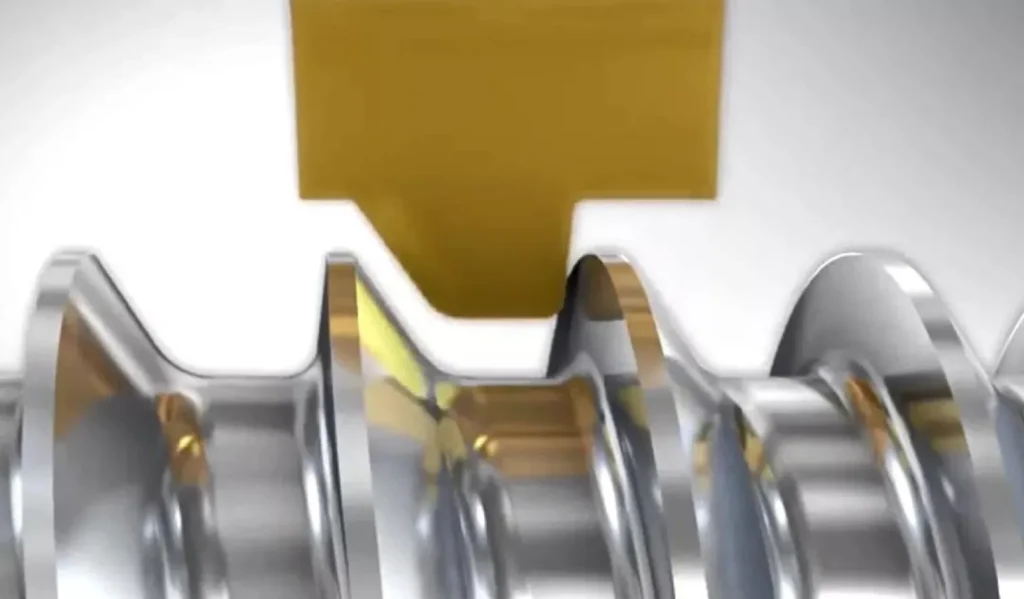
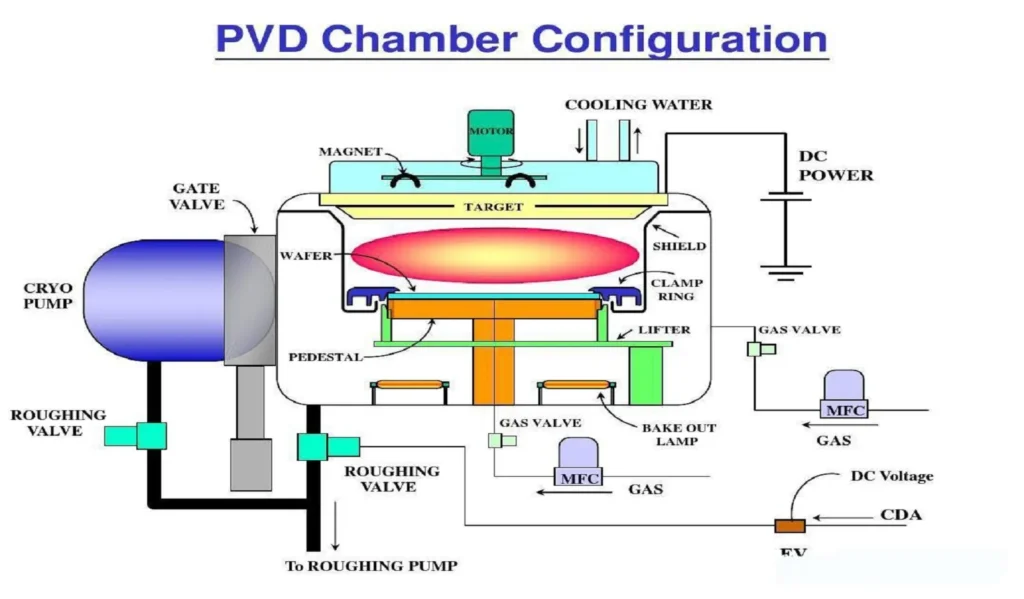

부오나세라,
페데리코 보피입니다,
금속 가공을 준비하고 있는데 해결되지 않는 질문을 발견했고 이것이이 메일의 동기입니다.
”네거티브 스펀지 도구는 압축, 압착에 더 큰 저항력을 제공합니까, 아니면 압축 및 압착에 무관심합니까?”
이 이메일이 침입이 아니길 바라지만, 만약 그렇다면 진심으로 죄송합니다.
시간 내주셔서 감사합니다.
Federico
1. 기계 가공에서 나선형 각도는 가공 시 태그가 부착된 기기의 표면 각도를 나타냅니다. 네거티브 스프레드 각도는 태그가 있는 도구의 표면이 태그 반대 방향으로 기울어져 있음을 의미합니다. 이렇게 하면 더 큰 경사각으로 더 크고 견고한 디바이스 포인트가 만들어집니다.
2. 태그에 직접적으로 닿는 가장 큰 재료 질량은 더 높은 지지력을 제공하여 작업 중 불규칙한 압축력에 대한 저항력을 높입니다. 이는 높은 압축력을 발생시키는 단단하고 깨지기 쉬운 재료를 포장할 때 특히 유리합니다. 압축 하중이 더 넓은 영역에 분산되어 라벨에 가해지는 스트레스를 줄이고 변형이나 파손을 방지합니다.
3. 또한 네거티브 스핀이 있는 기기의 더 많은 부분을 가로지르는 섹션은 압착력에 대한 최대 저항에 기여합니다. 태그 작업 중에 도구는 눌림이나 압착을 유발할 수 있는 힘에 노출됩니다. 네거티브 스핀이 있는 기구의 더 견고한 형상은 더 큰 강성을 제공하여 마찰을 최소화하고 특히 민감한 태그나 인터로트 태그에서 더 큰 정밀도와 안정성을 보장합니다.
4. 네거티브 글꼴을 가진 도구의 가장 큰 저항은 대부분의 태깅 힘에서 발생한다는 점에 유의해야 합니다. 이 도구는 기본적으로 포지티브 글꼴을 가진 도구와 마찬가지로 태그가 지정된 재료를 “호출”합니다. 이렇게 하면 기기에 더 많은 전력이 필요하고 더 많은 열을 생성할 수 있습니다. 따라서 양전하를 가진 기기와 음전하를 가진 기기의 선택은 특정 응용 분야, 작업 재료 및 기계의 성능에 따라 달라집니다.